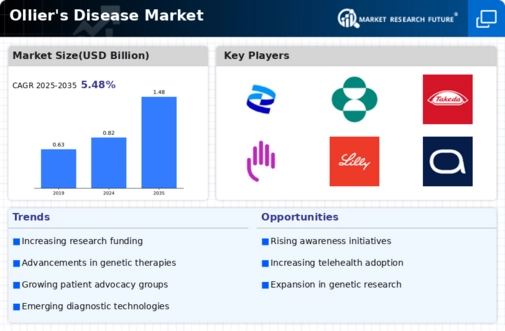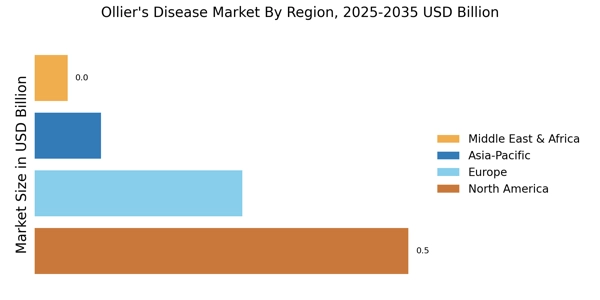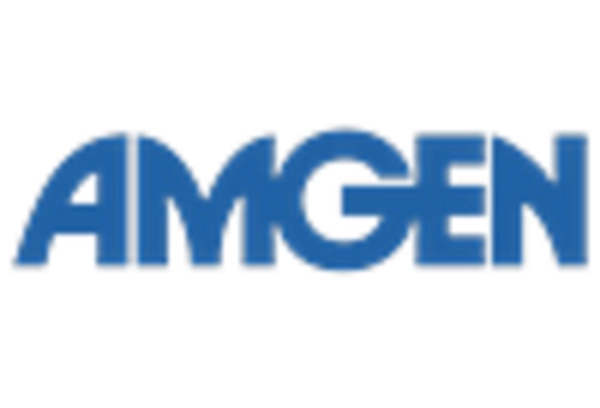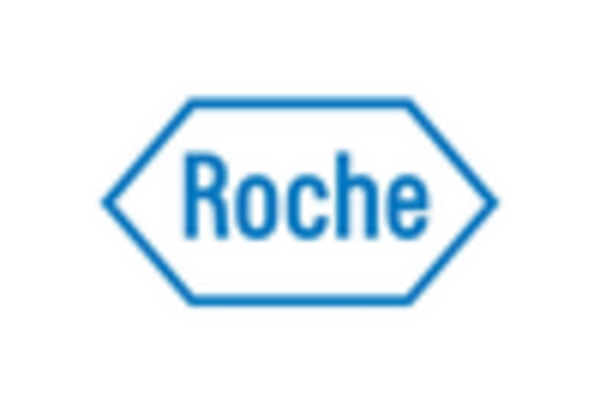Increased Research Funding
Increased research funding for rare diseases, including Ollier's Disease, is a pivotal driver for the Ollier's Disease Market. Governments and private organizations are recognizing the need for more comprehensive studies to understand the underlying mechanisms of rare conditions. This influx of funding may facilitate the development of novel therapies and treatment protocols tailored specifically for Ollier's Disease. Additionally, collaborative research initiatives among academic institutions, pharmaceutical companies, and healthcare providers could lead to breakthroughs in understanding the disease's genetic basis. As research progresses, the Ollier's Disease Market is likely to benefit from the introduction of innovative treatment options, enhancing the quality of care for affected individuals.
Emerging Therapeutic Options
The emergence of new therapeutic options is a driving force in the Ollier's Disease Market. Recent advancements in targeted therapies and personalized medicine are paving the way for more effective treatment strategies tailored to the unique needs of patients with Ollier's Disease. As pharmaceutical companies invest in the development of innovative drugs, the market is likely to see an influx of new products aimed at managing symptoms and improving quality of life. Additionally, the exploration of gene therapy and regenerative medicine holds promise for addressing the root causes of the disease. This evolving landscape of therapeutic options may attract more investment and interest from stakeholders, thereby propelling the growth of the Ollier's Disease Market.
Rising Incidence of Ollier's Disease
The increasing incidence of Ollier's Disease appears to be a significant driver for the Ollier's Disease Market. Recent studies indicate that the prevalence of this rare skeletal disorder is on the rise, leading to heightened awareness among healthcare professionals and patients alike. As more individuals are diagnosed, the demand for effective treatment options and management strategies is likely to grow. This trend may prompt pharmaceutical companies to invest in research and development, thereby expanding the market. Furthermore, the rising incidence could lead to increased funding for clinical trials, which may further enhance the availability of innovative therapies. Consequently, the Ollier's Disease Market is poised for growth as stakeholders respond to the needs of an expanding patient population.
Technological Advancements in Diagnostics
Technological advancements in diagnostic tools are transforming the landscape of the Ollier's Disease Market. Enhanced imaging techniques, such as MRI and CT scans, allow for more accurate and timely diagnosis of Ollier's Disease, which is crucial for effective treatment planning. The integration of artificial intelligence in diagnostic processes may further streamline patient assessment, leading to quicker identification of the condition. As diagnostic capabilities improve, healthcare providers are likely to become more adept at recognizing Ollier's Disease, which could result in earlier interventions and better patient outcomes. This trend may stimulate demand for specialized diagnostic services and products, thereby contributing to the overall growth of the Ollier's Disease Market.
Growing Patient Advocacy and Support Groups
The emergence of patient advocacy and support groups is playing a crucial role in shaping the Ollier's Disease Market. These organizations are dedicated to raising awareness about Ollier's Disease, providing resources for patients and families, and advocating for research funding. Their efforts contribute to a more informed public and encourage individuals to seek medical attention, which may lead to increased diagnoses. Furthermore, these groups often collaborate with healthcare professionals and researchers to promote clinical trials and new treatment options. As patient advocacy continues to grow, it is likely to influence policy decisions and funding allocations, ultimately benefiting the Ollier's Disease Market by fostering a supportive environment for research and treatment.


















Leave a Comment